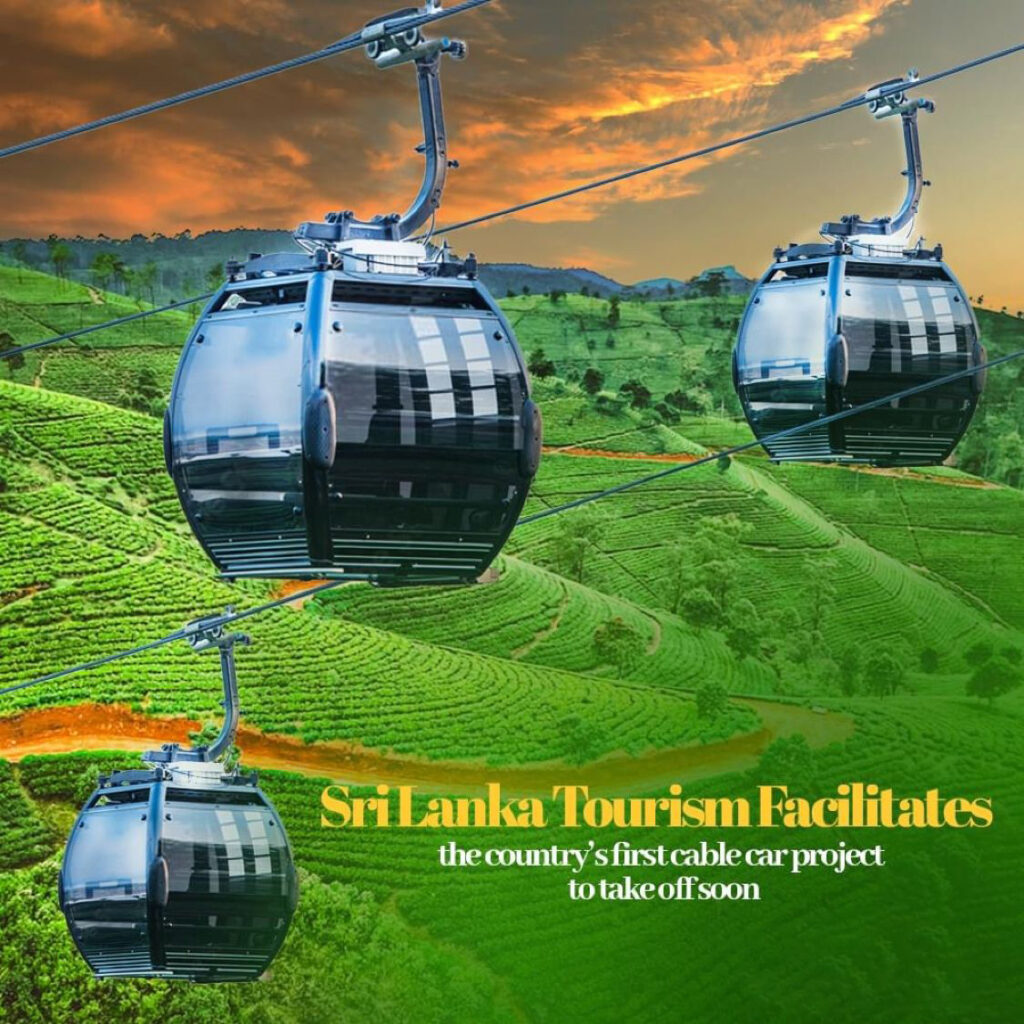The last few years have seen several efforts on all fronts, aiming to transform Sri Lanka into a truly contemporary tourism destination. This includes positioning Sri Lanka as a land of wonder, offering magical experiences to guests, yet ensuring modern facilities and world-class amenities. Necessary work has been done to ensure the infrastructure is in place and the tourist destinations are easily accessible to all visitors. Ease of access for the disabled and mobility challenged visitors are provided. Sri Lanka’s First Cable Car Project would be one of the main attractions in the future.
The Cable Car Project
The most recent project is ‘The Cable Car Project’. It is an initiative by the Outdoor Engineering Lanka PVT Ltd, facilitated by the Investor Relations Unit (IRU) of the Sri Lanka Tourism Development Authority (SLTDA).
The project will give the island its first cable car experience for locals and tourists. The distance of the cable car is nearly 4 Kilometers. The Cable Car will connect Nanu Oya with Nuwara Eliya town. This will provide an alternative and beautifully scenic route between the two locations.
Why Nanu Oya to Nuwara Eliya?
The location chosen for Sri Lanka’s First Cable Car Project has several reasons. Those are as follows.
- Breathtaking scenery
- Allows visitors a bird’s eye view of the lush green landscape, rolling hills, numerous tea estates
- Montane forests of Nuwara Eliya
This new way of locomotion will reduce the direct impact of tourism on nature. But it still allows visitors to observe, interact and enjoy the surroundings with a minimal environmental impact.
The project with an investment value that currently stands at EURO 55 Million (USD 62.15 Mn). This will implement as a “build, own, operate, and transfer” model. The agreement allows the total capital investment to be transferred to the Government of Sri Lanka after 30 years.
The project is scheduled to be completed within just 18 months from the date of receiving all approvals. Outdoor Engineers AG of Switzerland and its local representative, Outdoor Engineering Lanka Pvt Ltd are exponents of the project. The Ropeway system used in the project has a long history of use in the mountainous regions of Europe. It has more recently found wide acceptance around the world.
Advantages of the Cable Car Project
- The ease of use
- Low environmental impact
- Sustainable outlook
- Minimal impact on the environment
- Help drastically reduce emissions
- Leave behind no harmful emissions or residue
The project will build according to the highest global safety standards, reliable, and easy to maintain with the cost associated. The design of the ‘The Cable Car Project’ ensures that it blends seamlessly with the surrounding landscape. There will be no distraction from the natural setting.
Necessary measures have been taken to preserve the tree line, canopy, and other aspects of the wilderness during construction and implementation. Also, the implementation of the project would reduce harmful greenhouse emissions by approximately 180 metric tons per year.
As a BOOT project (Build, Own, Operate, Transfer), the operation will create new industries, opportunities, and jobs in the region. It is necessary to lift the standard of living of locals. Therefore, providing new opportunities to rural communities is necessary.
This is a new step in the right direction. Sri Lanka positions itself as an exclusive destination, for the high-value experiential traveler. The projects will also bolster the island’s reputation in the eyes of the world. Please check Vogue Lanka Travels for the latest travel updates in Sri Lanka.




